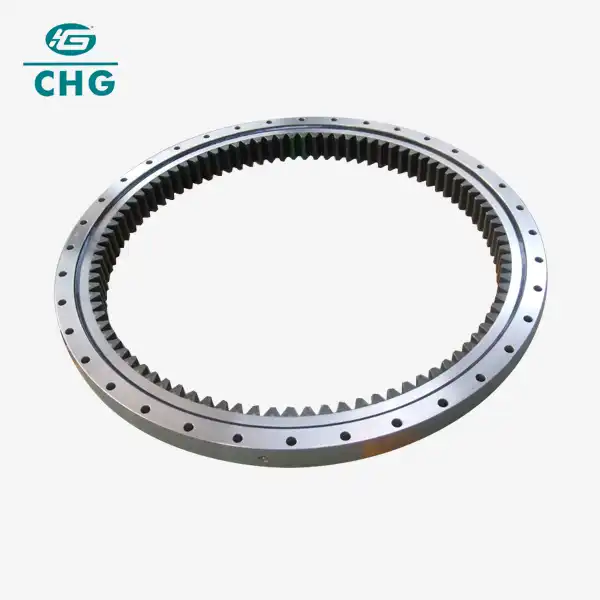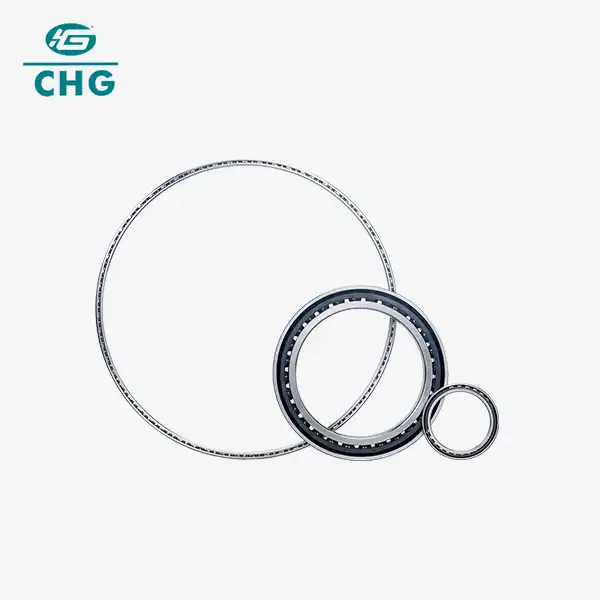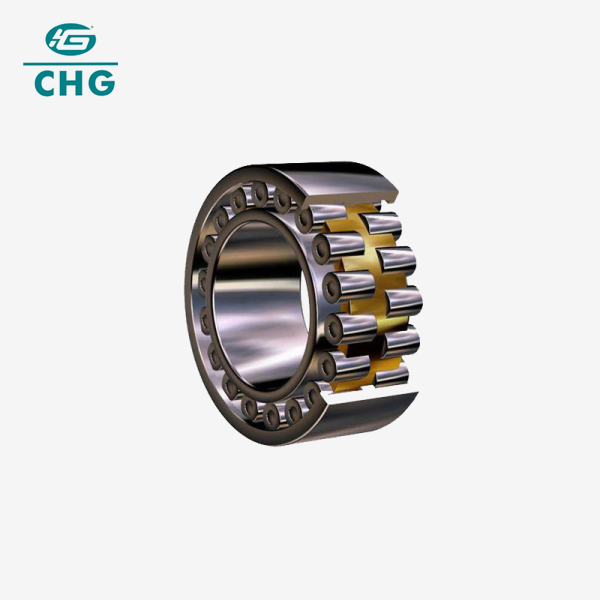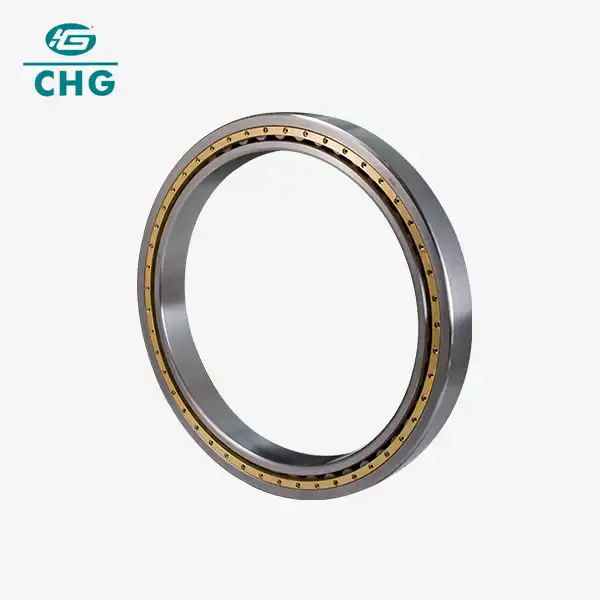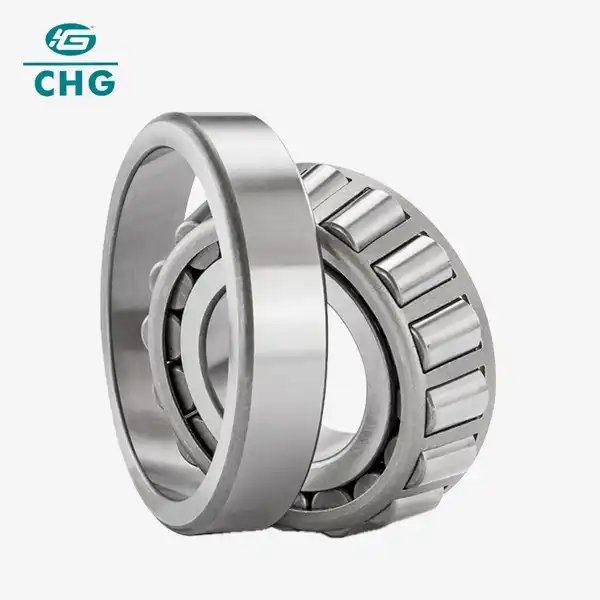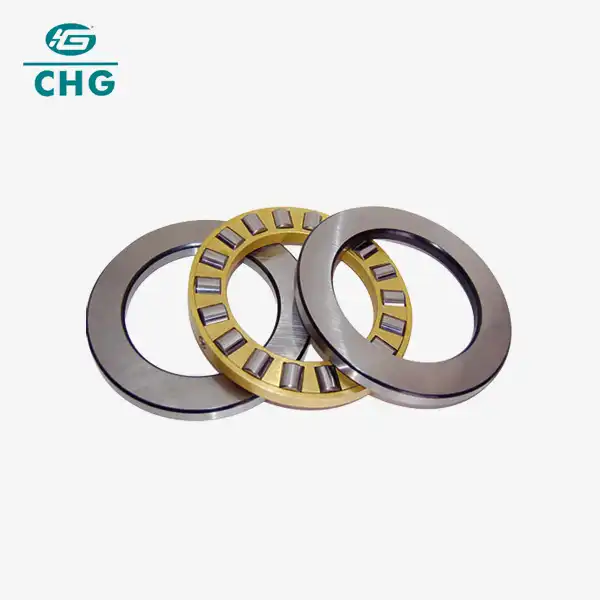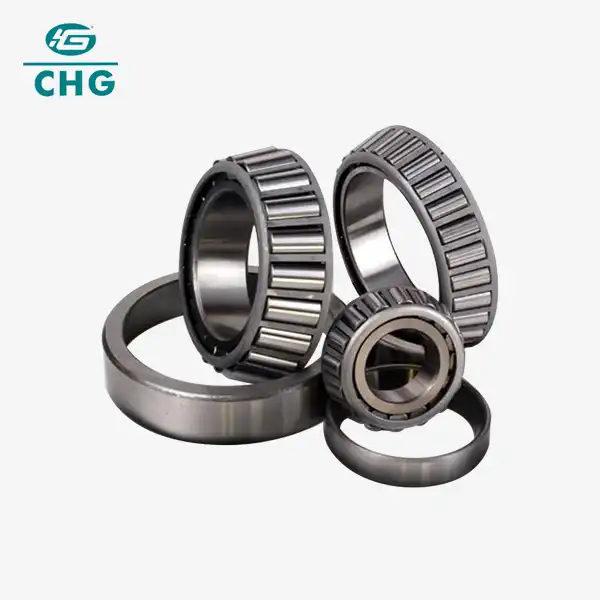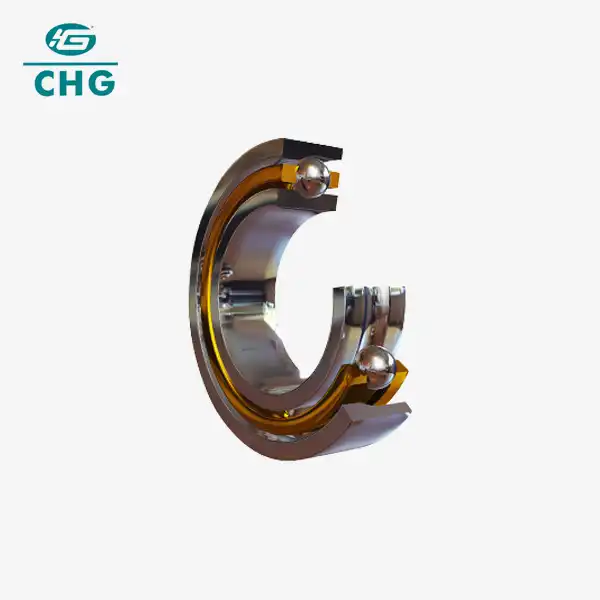CHG Bearings-Bearings used in optical pods
Optical pods are devices used for optical observation and detection on platforms such as aviation, aerospace, and drones. They typically integrate various sensors, including visible light, infrared, and laser. Bearings play a critical role in optical pods, ensuring stable rotation, precise pointing, and efficient operation. Below are the types of bearings commonly used in optical pods and their detailed introductions:
1. Precision Thin Section Bearings
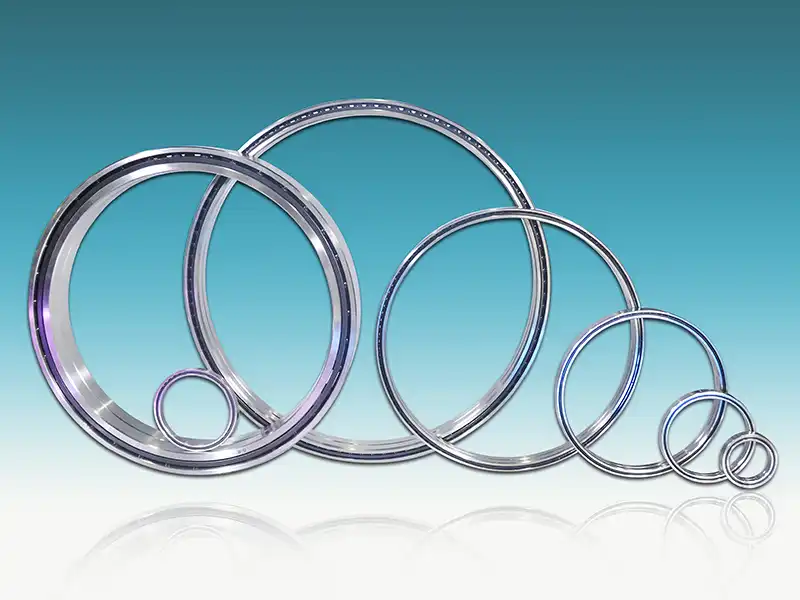
Application Areas: Rotation axis, pitch axis, and roll axis of the pod.
Function: Support the rotation and tilting movements of the pod, ensuring precise pointing of optical sensors.
Features:
High Precision: Meets the pointing accuracy requirements of optical systems.
Lightweight: Thin-wall design reduces the weight of the pod, making it suitable for aviation and drone applications.
High Rigidity: Withstands the load of the pod, ensuring motion stability.
Low Friction: Reduces energy loss and improves motion smoothness.
Environmental Requirements:
Resistant to high and low temperatures, vibration, and shock, suitable for harsh aviation and aerospace environments.
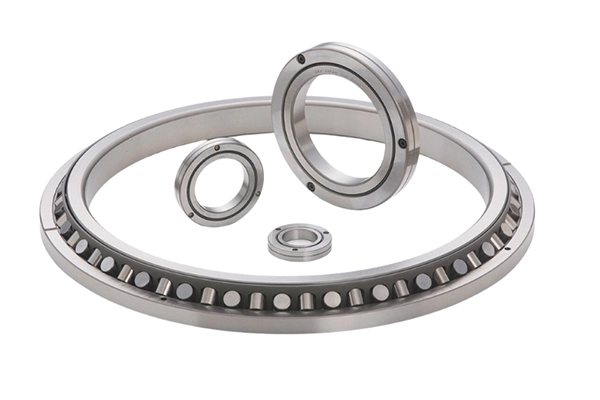
Application Areas: Rotating platform and pitch mechanism of the pod.
Function: Provides high rigidity and high-precision rotational support, ensuring stable motion of the pod.
Features:
High Rigidity: The crossed roller design can withstand radial, axial, and overturning moments.
High Precision: Suitable for optical systems requiring high pointing accuracy.
Compact Design: Saves space, suitable for the compact structure of the pod.
Environmental Requirements:
Resistant to high and low temperatures and corrosion, suitable for high-altitude and harsh environments.
3. Angular Contact Ball Bearings
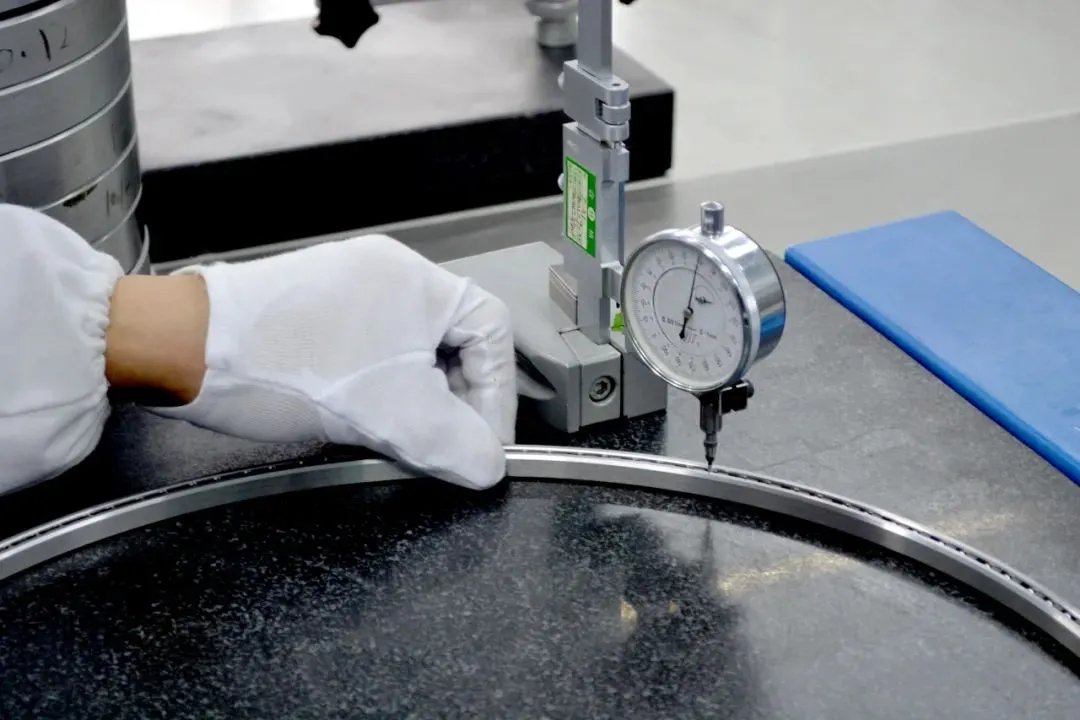
Application Areas: High-speed rotating components and precision transmission mechanisms of the pod.
Function: Supports high-speed rotation while bearing radial and axial loads.
Features:
High-Speed Performance: Suitable for high-speed rotating components in the pod.
High Precision: Ensures the pointing accuracy of the optical system.
Low Friction: Reduces energy loss and improves efficiency.
Environmental Requirements:
Resistant to high and low temperatures and vibration, suitable for high-speed rotation and complex loads.
4. Four-Point Contact Ball Bearings
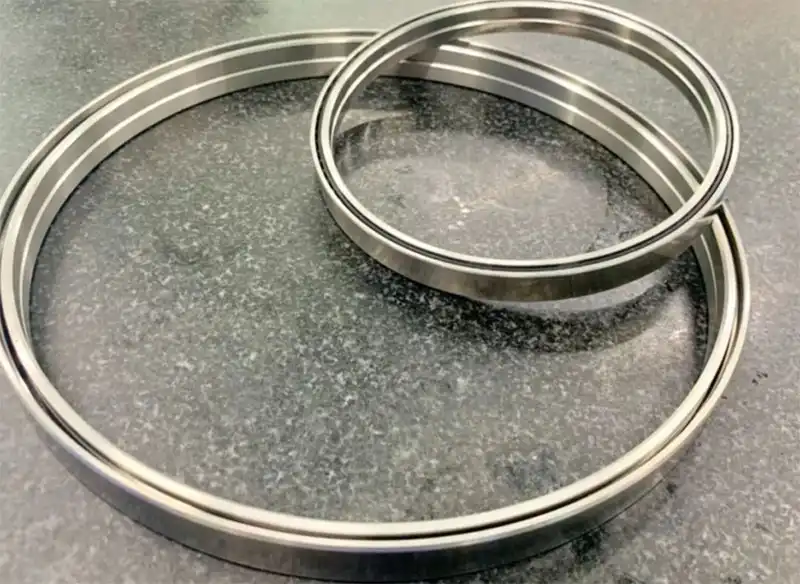
Application Areas: Rotational support mechanism of the pod.
Function: Bears radial and axial loads while allowing a certain degree of overturning moment.
Features:
Versatility: Can simultaneously bear radial, axial, and overturning loads.
Compact Design: Suitable for the space-constrained structure of the pod.
High Rigidity: Ensures stable operation of the pod.
Environmental Requirements:
Resistant to high and low temperatures and shock, suitable for aviation and aerospace environments.
5. Ceramic Bearings
Application Areas: High-speed rotating components and critical parts in high-temperature or corrosive environments.
Function: Provides high precision and long-life support in extreme environments.
Features:
High-Temperature Resistance: Suitable for high-temperature applications in optical pods.
Corrosion Resistance: Suitable for marine or high-humidity environments.
Low Density: Reduces weight, making it suitable for aviation and drone applications.
Environmental Requirements:
Resistant to high temperatures, corrosion, and wear, suitable for extreme environments.
6. Magnetic Bearings
Application Areas: High-precision rotating mechanisms in optical pods.
Function: Supports rotating components through magnetic force, achieving contactless and frictionless motion.
Features:
Frictionless: Significantly reduces energy loss and improves efficiency.
Ultra-High Precision: Suitable for ultra-high-precision optical systems.
Maintenance-Free: Contactless design reduces maintenance requirements.
Environmental Requirements:
Requires stable power supply and control systems, suitable for high-precision and high-reliability applications.
7. Harmonic Drive Bearings
Application Areas: Precision transmission mechanisms in the pod.
Function: Supports the input and output shafts of harmonic drives, enabling high-precision transmission.
Features:
High Precision: Ensures the accuracy and stability of transmission.
High Rigidity: Withstands complex loads during transmission.
Compact Design: Suitable for the compact structure of the pod.
Environmental Requirements:
Resistant to high and low temperatures and vibration, suitable for aviation and aerospace environments.
Core Requirements for Bearings in Optical Pods
High Precision: Ensures precise pointing and stable imaging of optical sensors.
High Rigidity: Withstands the load and complex moments of the pod, preventing deformation and vibration.
Lightweight: Reduces the weight of the pod, improving the efficiency of aviation and drone platforms.
Environmental Resistance: Adapts to harsh environments such as high and low temperatures, humidity, vibration, and shock.
Low Friction: Reduces energy loss and improves motion smoothness and response speed.
Long Life: Ensures the reliability and stability of the pod during long-term operation.
Summary
The types of bearings used in optical pods include precision thin-wall bearings, crossed roller bearings, angular contact ball bearings, four-point contact ball bearings, ceramic bearings, magnetic bearings, and harmonic drive bearings. These bearings play a vital role in key areas such as rotation, pitch, and roll of the pod, ensuring high precision, high stability, and high reliability of the optical system. At the same time, these bearings must meet stringent requirements such as high precision, high rigidity, lightweight design, environmental resistance, low friction, and long life to adapt to the complex working environments of optical pods.

